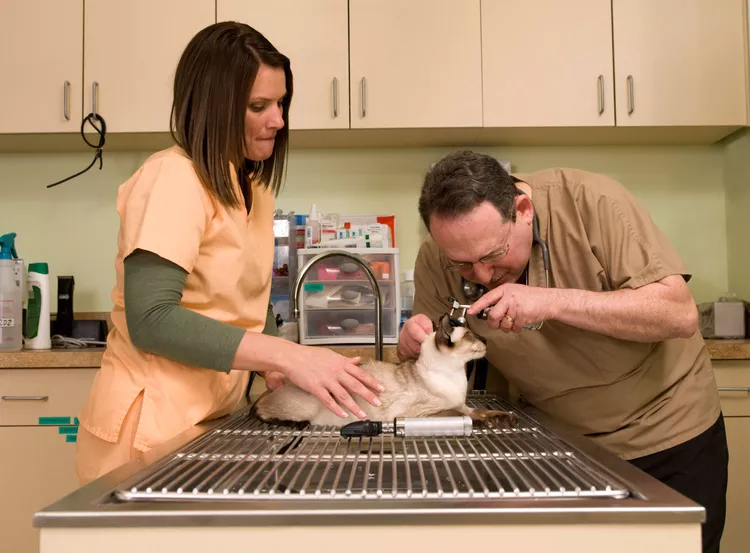The "off" command is used to tell a dog to get its paws off of something. It may be the kitchen counter, your bed, the living room couch, or anything else you don't want your dog on. Dogs usually jump up to get to something they want, like a scrap of food or a comfy place to sleep. This can be a difficult command to teach, but it is possible. Just be patient and consistent and your dog will soon respond to the off command.
Stash Treats
The trick to teaching the off command is catching your dog on something you don't want it on. That means you'll need to be prepared and keep some treats in a few different places around your home, preferably near these off-limit locations. You'll have them on hand whenever needed and can begin training your dog.
Wait for the Behavior
Training a dog the off command is different from training a lot of the other basic commands. Rather than planning training sessions, you need to wait until your dog is behaving inappropriately to train it to get off. Keep an eye on your dog and be prepared to stop whatever you're doing when you see the inappropriate action.
Give the Command
When you see your dog with its paws up on the counter or making itself comfortable on your couch, tell it "off." Use a stern voice so the dog knows you mean business, but do not yell. React quickly, as soon as the action has taken place so your dog can connect your command with its action.
Lure the Dog Off
Use one of your stashed treats to lure your dog off. As you give the off command, show your dog the treat. It may also help to shake the treat and call the dog's name to get its attention. As soon as all four paws are on the floor, give the dog the treat.
Problems and Proofing Behavior
Inconsistent enforcement of this behavior can make it difficult for a dog to learn the off command, and to know what is off limits and what is not. The only way your dog is going to stay off the counters or furniture for good is if you make it get off every time it jumps up. If you (or someone else in your household) allow the dog to get away with it at times, it will learn that it's worth a shot because sometimes it will be allowed the opportunity to snatch food or curl up on the couch. Make sure that everyone who handles your dog, including family members and dog walkers, knows and enforces these rules.
Continue to tell your dog "off" each time it jumps up on the prohibited thing, even after you've completed the training. Lure it down with a treat, as needed, and make sure to offer the treat whenever all paws are on the floor.
Your dog may soon learn that when it jumps on something, it ends up getting a treat. Instead of training your dog to get off something, your dog is training you to give it treats. To overcome that problem, make your dog work for the treat. Follow the same steps as above, but before you give up the treat, give the dog another command, such as sit or down. Offer the treat only after your dog has performed this command. You'll break the connection your dog makes between jumping up on something and getting a treat.




















